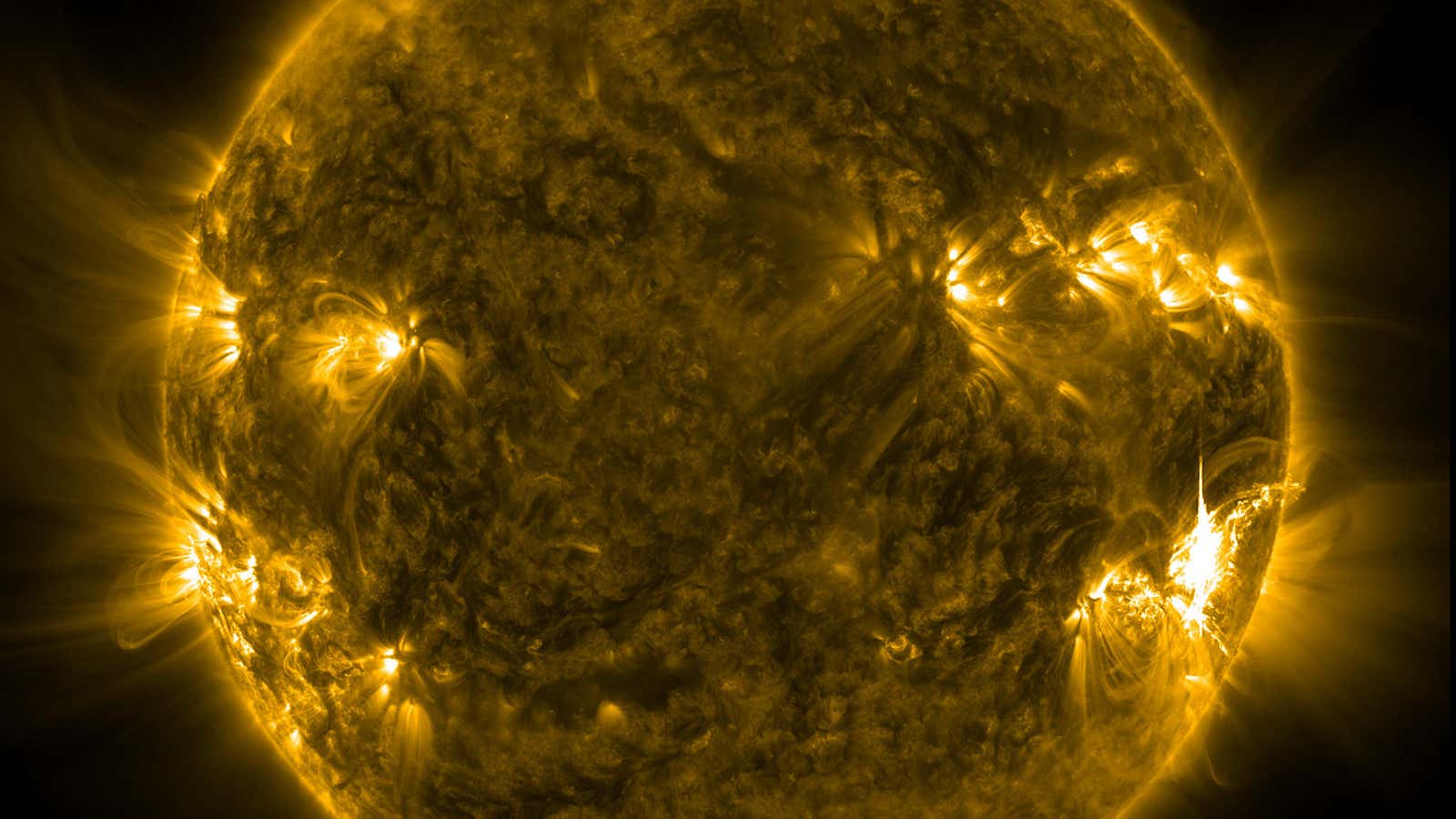Life on Earth began some 4 billion years ago. But it shouldn’t have.
In its lifecycle, at that time, a young star like our sun would have been radiating only about 70% as much energy as now. That would have made the Earth an icy ball. And so there would have been no liquid water to give life an essential ingredient it needed.
Yet, we know from geological evidence that somehow life did start then. This is called the “faint young sun paradox,” and scientists have been trying hard to explain what made life feasible on Earth under those conditions. So far, they have failed to find a definitive answer.
One theory suggests that there might have been a lot of carbon dioxide in the atmosphere. This gas traps the sun’s heat, and, though it is now causing global warming with catastrophic results, back then the warming could have created the conditions for life to start. But the geological evidence from ice cores and computer modeling (pdf) show that carbon dioxide levels were lower.
Another theory suggests that some heat could have been produced by radioactive material, which probably existed in much more abundance than it does now. When radioactive material decays, over millions of years, it produces smaller particles and radiogenic heat. But, even if this were true, radiogenic heat on its own would not be enough to turn icy Earth into one with large amounts of liquid water.
Yet another theory suggests that the moon could have created the required heat. Since it was formed, the moon has been moving away from the Earth. So, back then, the moon would have been much closer. This could have caused something called “tidal heating,” where the moon’s gravity would knead the Earth’s interior and thus produce heat through friction. But the trouble with this theory is that the moon’s gravity, even if closer, may not have been enough to cause the tidal heating needed.
Now, researchers have suggested another theory, and this time they may be on the right path. NASA researchers believe that violent eruptions from the sun in the form of solar flares could have provided the heat that the atmosphere needed some 4 billion years ago to make life feasible on Earth
Solar flares occur when the sun lets out an unusually large amount of electromagnetic radiation from its surface. These are often followed by coronal mass ejections (CMEs), which consist of fast-moving, high-energy plasma from the sun. Even though the Earth’s magnetic field offers some protection against solar flares and CMEs, the more violent ones can easily break through the atmosphere. When they do, they can cause havoc by disrupting everything from modern electronic devices to satellites.
Fortunately, solar flares of that intensity are a rare occurrence today. Only one such event has been recorded in the last 30 years. But our young sun was a lot more violent. In the new study, NASA researchers estimate the Earth probably received one CME per day then. Dumping this amount of energy into the atmosphere could kickstart many chemical reactions, which could have helped heat up the atmosphere.
The most common sort of reaction would have been the splitting up of the highly stable nitrogen molecule (N2), which would then combine with other molecules in the atmosphere, such as carbon monoxide (CO), carbon dioxide (CO2), water (H2O), methane (CH4), ammonia (NH3), etc. It could then form products such as hydrogen cyanide (HCN), which is a precursor to the molecules of life, including DNA bases and proteins, and nitrous oxide (N2O), which is a powerful greenhouse gas that can trap the sun’s heat in the atmosphere.
The beauty of this theory is it kills two birds with one stone: It solves the problem of how warming Earth to the temperature required to create liquid water, and it creates the feedstock of chemicals needed to generate the primordial soup from which life was born. “A rain of other nitrogen-bearing molecules onto the surface would also provide fertilizer for a new biology,” explains Monica Grady of Open University.
As with any theory, new evidence could upend it. But, until then, this is the best explanation for the faint young sun paradox that we have so far.
